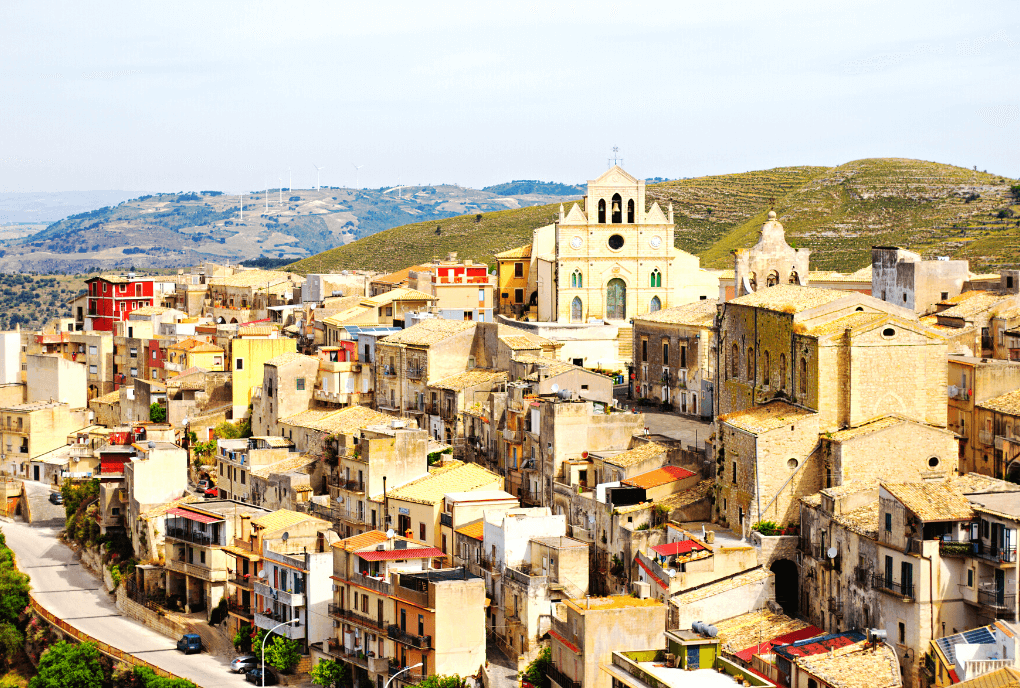
Monterosso Almo, the small village within the Monti Iblei
Monterosso Almo is a small town in the heart of the Iblei Mountains at 700 meters above sea level. Inhabited by just over 3,000 people, it is part of one of the “Most Beautiful Villages in Italy.” The reality in which its inhabitants live is intimate, amid traditions and human relationships steeped in the atmosphere created within the town center, rich in churches, small alleys and characteristic monuments.
The history of Monterosso Almohas very ancient roots, dating back to the Copper Age, as evidenced by the Hypogeum of Calaforno, the oldest in the Val di Noto, and Monte Casasia settlements dating back to the seventh century B.C. In Norman times the village was called Lupia, or Casal Lupino, because of the presence of wolves. Instead, the present name derives from “Mons Almo,” originating in the Aragonese period. Specifically, the toponym Mons Rubens, i.e., Monte Rosso is found since 1338 and comes from Count Rosso of Messina.
The village was completely destroyed by the 1693 earthquake and was rebuilt on top of the mountain, unlike the old village that was below.
A tour through the wonders of the village
Walking through its narrow streets, in the main square called “U Chianu,” which in dialect means The Flat, stands out in all its elegance the Church of St. John the Baptist, in perfect Sicilian Baroque style, perhaps one of the most beautiful examples in the Val di Noto. The building features a pyramid-shaped facade that reaches 22 meters in height, with a breathtakingly scenic vault inside that illuminates the entire nave in ivory white. The positioning of the facade is oriented toward the east with pinpoint accuracy so that every June 24, the day of the feast of St. John, at dawn, the sun could enter the window and illuminate the Simulacrum of the Patron Saint of Monterosso Almo.
The Cocuzza Palace and family histories.
Continuing the tour, there is the Cocuzza Palace, home of the Civic Museum, which dominates the square with grandeur, just as the family of the same name once did with several estates in the surrounding area. At the behest of Senator Federico Cocuzza, at the beginning of the last century, a new section of the railroad was started, connecting Syracuse to the Giarratana junction, from which one could reach Ragusa or Caltagirone and pass near Monterosso. A few tunnels and a few abandoned stations remain of the railway today, and the idea is to turn it into a hiking trail.
Walking through small alleys and narrow stairways, here are the Churches!
Certainly in Monterosso Almo there is no shortage of small alleys, courtyards, and narrow stairways with ancient arched passageways that lead into the village’s oldest quarter, called the Matrice. Here, there is the Church of Our Lady of Sorrows, which was rebuilt after the 1693 earthquake and overlooks the distinctive St. Anthony Square, where there are two semicircles with seats that seem to embrace the facade.
On the opposite side of the square, however, is another church, the majestic Mother Church, which also collapsed in the 1693 earthquake and was later rebuilt. It has a facade composed of four orders, the first three having a regular, square shape, with entrance portals and domed mullioned windows, accompanied by the two large clocks on either side. The last order is more distinctive, with a pyramidal shape that doubles as a bell tower, in which three bells are placed. Inside, works of art are placed, many of which date from the 11th century 13th century. In the part in front of the church, there is a very impressive view of the valley below.
Find some photos here.
Have you felt like visiting Monterosso Alma? This is a great time to plan a trip!
Giulia Nari





